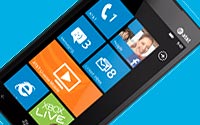
Microsoft, Nokia and AT&T teamed up for a major marketing push behind the April launch of Nokia’s Windows Phone-powered Lumia 900.
AT&T reportedly put up $150 million for promotional activities around the device
that Microsoft and Nokia are counting on to mount a credible challenge to Apple and Google in the smartphone market.
Priced for mass adoption at just $99, the Lumia 900 sports a sleek body,
large display and features like high-speed 4G service via AT&T. But a new Yankee Group report finds the
Nokia phone has not been a hit with customers so far, based on a May survey of 111 Lumia 900 users.
On a 1-5 rating scale, 41% of survey participants answered “1” -- that they
aren’t likely at all to recommend the phone to a friend or family member. While the Lumia 900 overall earned a rating of 2.5 out of 5, the report noted that its Net Promoter Score -- a widely
used measure of product and service success -- was -50, suggesting that far fewer consumers were willing to recommend it than not.
The research showed the majority of Lumia 900 owners
(61%) were first-time smartphone buyers, indicating that the device had captured the attention of consumers entering the market. Buyers were drawn by the AT&T brand and the device’s low
price tag. Given that AT&T typically rates lowest among the four major carriers for customer satisfaction in Consumer Reports surveys, that doesn’t say much for Nokia or
Microsoft.
What went wrong?
According to Yankee Group, a series of missteps undermined the Lumia 900 launch. For one, the U.S. release was scheduled on Easter Sunday, when most
AT&T stores were closed for the holiday. After debuting, some customers found their phones could not access data on the cellular network, undercutting AT&T’s claims of high speeds on its
LTE network. In response, AT&T ended up providing a $100 credit on the Lumia 900 phone for the month of April.
Yankee Group analyst Carl Howe also faults AT&T for pricing
the device too low. “Our survey shows that owners bought the phone because it was cheap -- not because of its features, Nokia’s brand or Windows Phone OS -- and that cheap message undid
AT&T’s unique selling proposition for the phone,” he wrote.
Howe added that any new “hero” phone -- like the HTC One X AT&T subsequently launched this spring --
should be sold at a $199 list price or higher with a two-year contract. That is, a premium product should carry a premium price. Microsoft declined to provide any sales data for the Lumia 900,
but said in a statement Friday the company was “optimistic” about the short- and long-term prospects for the Windows Phone line.
Ramon Llamas, a mobile analyst with research firm
IDC, said that based on anecdotal information, the Lumia 900 got off to a strong start but that consumer enthusiasm has cooled more recently with the focus switching to newer models, like the HTC X
One. “These flagship devices, they by and large change every six weeks or so,” he said, unwilling to write the phone off yet.
Taking the larger view, Yankee Group's Howe argued
that Microsoft should buy Nokia outright if it wants to get its mobile offerings into the mainstream, especially now that Google has completed its acquisition of Motorola. That would give it the best
chance of seamlessly blending software and hardware products to compete in the intensely competitive smartphone arena. As it is, Microsoft's mobile platform is only running on 4% of U.S. smartphones,
according to the latest comScore data.